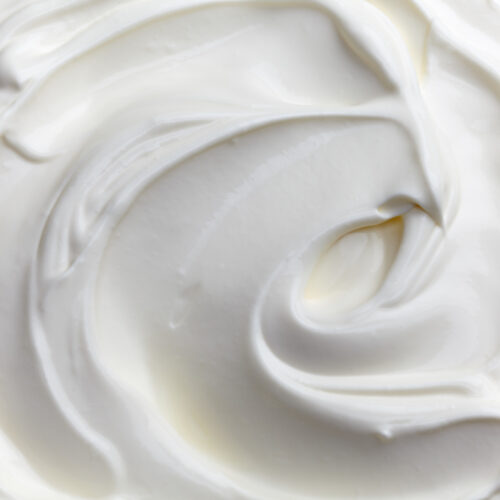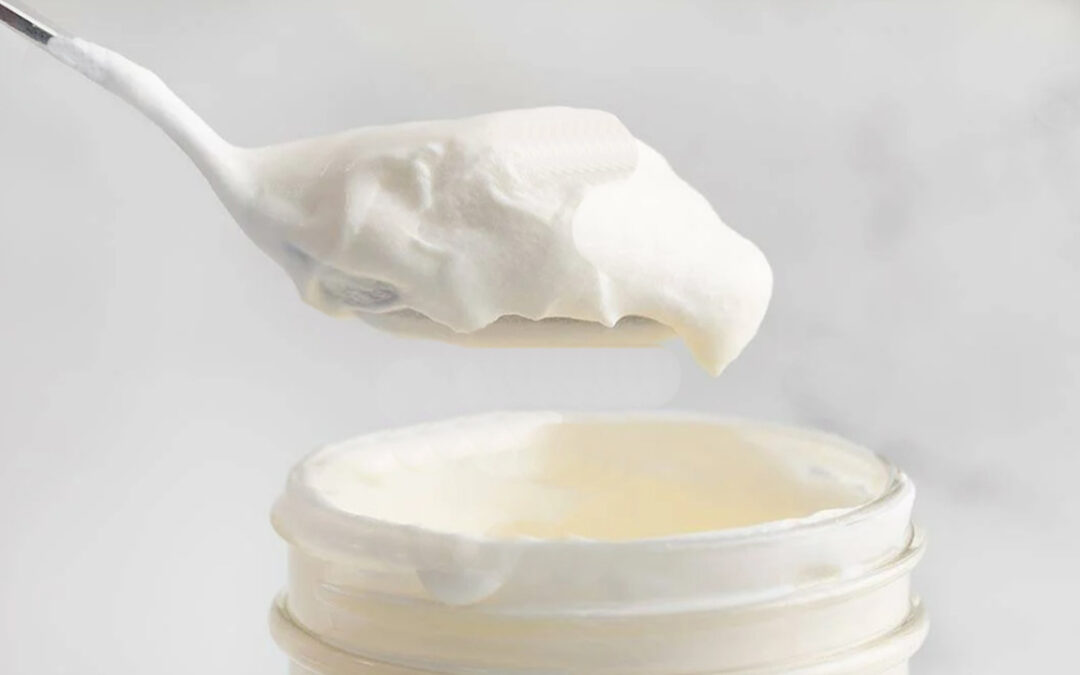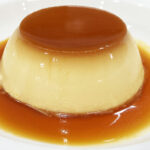
How to Make Crème Fraiche
Recipe Video
Recipe Ingredients
- 2 cups Heavy Whipping Cream
- 2 tablespoons Cultured Buttermilk
Recipe Instructions
- In a glass bowl, combine the heavy whipping cream and cultured buttermilk, ensuring they are well mixed. Cover the bowl loosely with a kitchen towel. Allow the mixture to sit at room temperature for 24 hours.
- After 24 hours, transfer the bowl to the refrigerator and let it thicken for 2 to 3 days.
Notes:
- Ensure your buttermilk is labeled as "cultured" to achieve the desired result.
- Once prepared, the crème fraiche can be stored in the refrigerator and will remain fresh for up to 2 weeks.
- Crème fraiche can be a versatile addition to various recipes. It can be used cold in dressings or dessert preparations. For a delightful treat, sweeten it with a sprinkle of sugar and dollop over freshly sliced strawberries. Alternatively, consider using it as a replacement for regular whipped cream in recipes. Its unique composition allows it to retain its flavor and consistency even when exposed to boiling temperatures.
Private Notes
How to Make Crème Fraiche: Frequently Asked Questions
1. What is Crème Fraiche?
Crème Fraiche is a thick, tangy cream that’s popular in French cuisine. It is similar to sour cream but has a richer flavor and thicker consistency.
2. How is Crème Fraiche used?
Crème Fraiche is a versatile ingredient used in both savory and sweet dishes. Its rich, tangy flavor and creamy texture make it a popular choice in various cuisines, especially French. Here are some common uses for Crème Fraiche:
1. Sauces and Soups: Crème Fraîche can be stirred into sauces and soups to add creaminess and depth without the risk of curdling, which can sometimes occur with other dairy products when heated. Or used in cold sauces such as Creamy Horseradish Sauce.
2. Toppings: It’s commonly used as a garnish or topping for soups, baked potatoes, tacos, or chili.
3. Salad Dressings: Mixed with herbs, garlic, lemon zest, or mustard, crème fraîche can be transformed into a tangy dressing for salads.
4. Desserts: Crème fraîche can be used as a topping for fruits, pies, and cakes or incorporated into mousses, custards, and other desserts to add a tangy contrast.
5. Baking: It can be used in baking to produce tender scones, cakes, and pastries.
6. Dips: When mixed with herbs, spices, and other flavorings, it makes for a great dip for vegetables or chips.
7. Marinades: Its acidity can help tenderize meats in marinades.
8. Eggs: It can be added to scrambled eggs, omelets, or quiches to give them a creamy and rich texture.
9. Pasta and Risotto: Stirred into pasta or risotto dishes, crème fraîche provides a creamy texture and tangy flavor.
10. Fish and Seafood: Often used in dishes that feature salmon, caviar, or other seafood.
11. Tarts and Pies: It can be used as a base for savory tarts or pies, providing a creamy layer beneath vegetables, meats, or fish.
12. Side Dishes: Mixed with mashed potatoes or vegetables for added creaminess and flavor.
Crème Fraîche’s ability to resist curdling under heat, combined with its unique flavor profile, makes it a staple in many professional kitchens and a favorite among home cooks as well.
3. How is Crème Fraiche different from sour cream?
Crème Fraîche and sour cream are both cultured dairy products, but they have distinct characteristics and are produced differently. Here are the key differences between the two:
1. Origin and Usage:
Crème Fraîche: Traditionally a French product, Crème Fraiche is used in various European cuisines for sauces, soups, desserts, and more.
Sour Cream: This is more common in the United States and parts of Europe and is often associated with Eastern European, Mexican, and American dishes.
2. Fat Content:
Crème Fraîche: Typically has a higher fat content, around 30-40%. This higher fat content gives it a richer, creamier texture and allows it to be heated without curdling.
Sour Cream: Contains about 20% fat. It’s lighter than crème fraîche and can curdle more easily when exposed to high heat.
3. Texture and Consistency:
Crème Fraîche: It is thick with a creamy consistency but is usually a bit less solid than sour cream.
Sour Cream: Is also thick, but can sometimes have a slightly more gelatinous texture due to added stabilizers and thickeners.
4. Taste:
Crème Fraîche: Has a rich, tangy flavor but is less tangy than sour cream. Its taste is often described as milder and nuttier.
Sour Cream: As the name suggests, it has a pronounced tangy or sour taste.
5. Culturing Process:
Crème Fraîche: Made by adding a bacterial culture (often buttermilk) to heavy cream and allowing it to stand at room temperature until thickened.
Sour Cream: Produced by fermenting regular cream with different types of lactic acid bacteria, giving it its signature sour taste.
6. Cooking Properties:
Crème Fraîche: Due to its high-fat content, it can be boiled or cooked without curdling, making it ideal for sauces and soups.
Sour Cream: Can curdle if boiled, so it’s usually added to hot dishes at the end of cooking or used as a topping.
7. Storage:
Crème Fraîche: Can be stored in the refrigerator for about 7-10 days once prepared or opened.
Sour Cream: Depending on the brand and additives, it can often be stored in the refrigerator for up to two weeks after opening.
While they can sometimes be used interchangeably in recipes depending on the desired result, their unique properties make each better suited for specific culinary applications.
4. How long can I store crème fraîche?
Once it’s made and refrigerated, crème fraîche can last for up to 10 days.
5. Can I use yogurt instead of cultured buttermilk to make crème fraîche?
Yes, you can use a small amount of plain yogurt as a starter culture. It will give a slightly different flavor but will work in a pinch.
6. Why is cultured buttermilk preffered to make crème fraiche?
Cultured buttermilk contains active lactic acid bacteria, which is necessary to ferment and thicken the heavy cream, giving crème fraîche its characteristic tangy flavor.
Here’s a brief breakdown:
What is Cultured Buttermilk?
Cultured buttermilk is a fermented dairy product that is made by adding specific lactic acid bacteria to milk. It’s different from the traditional “buttermilk” which was the residual liquid left after churning butter. Today, the term “buttermilk” typically refers to cultured buttermilk in grocery stores.
Why is Cultured Buttermilk Essential for Crème Fraîche?
The lactic acid bacteria present in cultured buttermilk ferment the sugars in the cream, producing lactic acid. This not only gives crème fraîche its tangy flavor but also thickens the cream due to the reduction in pH and the coagulation of milk proteins.
Can I Make Crème Fraîche Without Cultured Buttermilk?
While cultured buttermilk is a common and effective starter for making crème fraîche, there are other methods and ingredients, like using a small amount of plain yogurt or even commercial crème fraîche as a starter. However, for consistent and authentic results, cultured buttermilk is preferred.
When shopping for buttermilk to make Crème fraîche, ensure it’s labeled as having “active cultures” or “live cultures” to ensure fermentation.
7. Why does crème fraîche not curdle when heated?
Due to its high-fat content and the absence of proteins found in regular creams, crème fraîche can withstand higher temperatures without curdling, making it ideal for cooking.
8. Is it safe to leave the cream and buttermilk mixture out for so long?
Yes, the acidity from the buttermilk prevents harmful bacteria from growing and allows beneficial bacteria to thicken and flavor the cream.
- My Best Gazpacho Soup Recipe: Chilled to Perfection - August 24, 2023
- Simply The Best Deviled Eggs Recipe: Eggstraordinary! - August 21, 2023
- How To Make Crème Fraiche: Creamy & Delicious! - August 20, 2023







